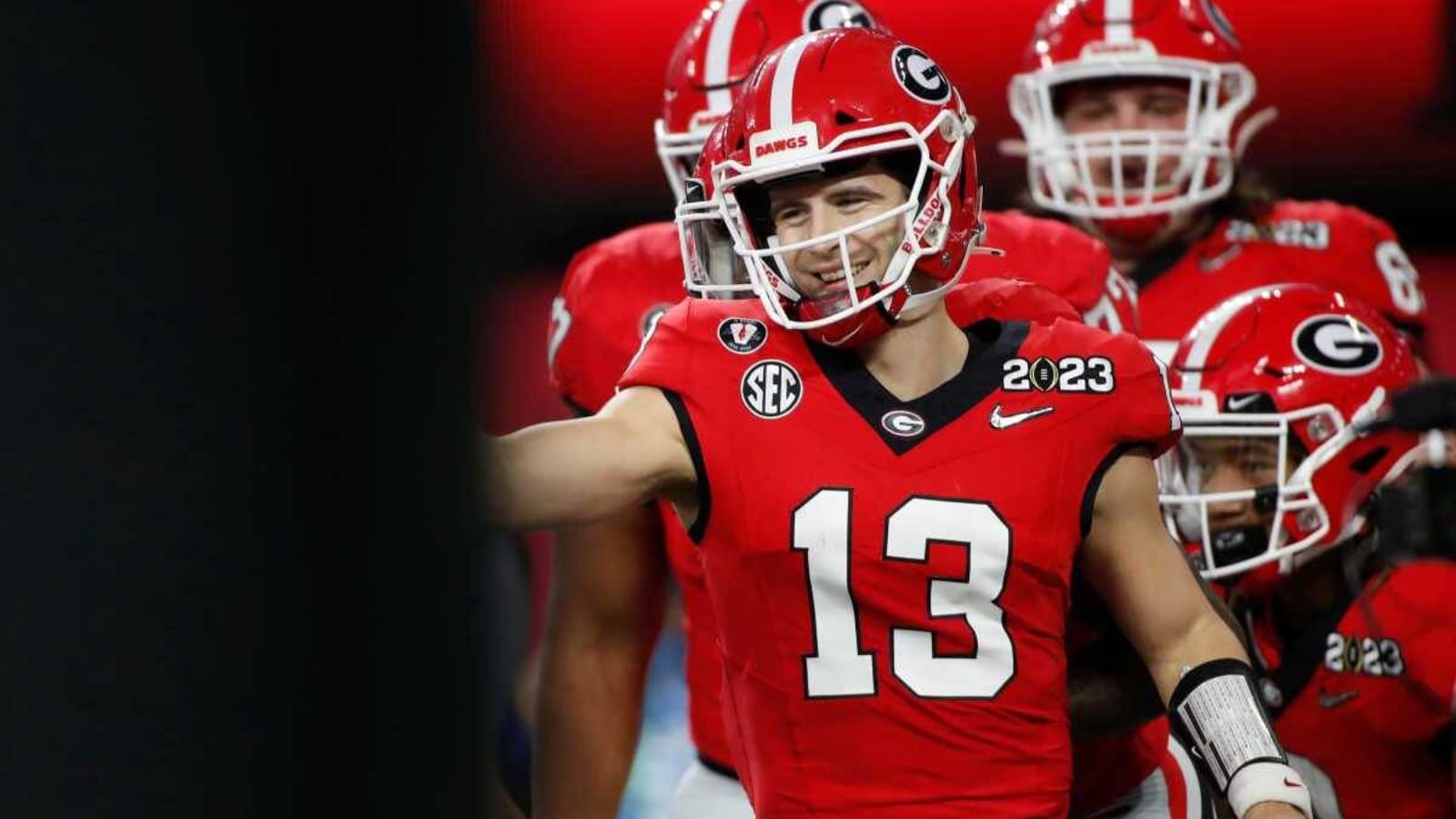
Stetson Bennett is one of the most storied players over recent college football history due to the fact he was a walk-on who went from an unknown recruit with one FBS offer to a player who won two consecutive national titles.
But players like him may be no more, sooner rather than later.
This comes down to how things shake out with the House vs. NCAA case, which is expected to result in revenue sharing with athletes and bring about a host of changes to an already very changed college sports landscape.
Here's a look at some of the most important details to know from Ross Dellenger of Yahoo Sports, who has had the biggest scoop on the potential looming settlement and the documents pertaining to it.
If they lose in court, NCAA & conferences estimate that they'd pay as much as $20 billion in damages - a figure that'd necessitate them filing for bankruptcy, docs say.
— Ross Dellenger (@RossDellenger) May 14, 2024
A judge will invalidate rules around NIL pay, triggering "unconstrained" payments https://t.co/FWoVGIF9OJ
"Schools are expected to pay about 60% of the $2.776 billion in back damages from their NCAA distribution, Yahoo Sports documents say," Dellenger wrote. "Over the 10-year settlement, power schools will see a 20% reduction in NCAA distribution - or about $160 million annually."
Another key thing comes down to booster play and the concept commonly dubbed "pay for play."
"In a significant part of a proposed settlement, the court will “reaffirm” NCAA’s remaining compensation rules, including prohibiting booster pay if they're not "true NIL," Dellenger wrote. "Schools will be offered “economic incentives” to bring collectives in-house."
How the House vs. NCAA case could affect roster limits in college sports
There could be the case that schools that center around particular sports could capitalize on the fact that scholarship limits like the 85 available for football, would be eliminated. At the same time, they would be replaced by lower roster caps for each sport.
It is also possible for scholarship limits to be eliminated with roster caps still implemented as a move outside of the settlement expected to come within the next two weeks.
“If there are more scholarships, then there’s more revenue going to athletes,” Mit Winter, an attorney specializing in college sports, said in a report from The Athletic. “It’s not direct cash payments, unlike revenue sharing, but schools want to get some credit as part of this settlement for adding these scholarships.”
Overall, it gives programs more autonomy across various sports, and one thing to watch will be the potentially heavy scholarship additions for sports like baseball in places where it is prominent at the college level like Mississippi State and Vanderbilt in the SEC.
"But there’s a chance there are no roster caps. Let the market decide or at least the schools: If Alabama wants to splurge for 125 football scholarships in a certain year, let it," The Athletic's Seth Emerson explained. "If Vanderbilt wants to pay for 35 scholarship baseball players, more power to the Commodores. If you have resources, not having a scholarship cap allows you more autonomy and flexibility."
What could this mean for the future of walk-ons and the potential of there ever being another Stetson Bennett?
The end of scholarship limits in sports could also mean the end of the walk-on as we know it, considering that scholarships would come in other sports if the football limit were to remain at 85.
The majority of sports, including football at 120, have roster limits that are already set with a line between those who were scholarship and walk-ons. How the situation continues to progress will be something to keep an eye on.
If this is all to go through, it is likely we will never see another storybook career quite like the one put together by Stetson Bennett.
More must-reads:
- Broncos' Sean Payton shares promising Bo Nix update amid competition
- Bills give Olympic gold medalist chance in NFL
- The 'Recent seasons with 1,000 receiving yards' quiz
Breaking News
Customize Your Newsletter
 +
+
Get the latest news and rumors, customized to your favorite sports and teams. Emailed daily. Always free!

